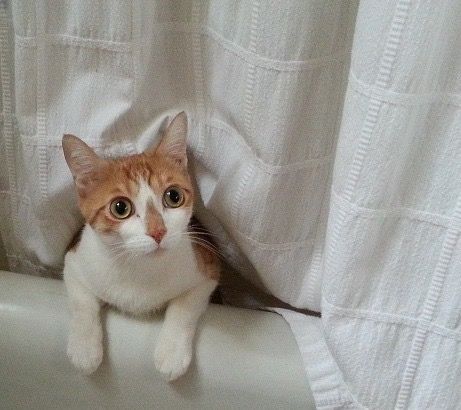Mindfulness
Why Intrusive Thoughts Are like My Cat Abraham
The less you try to be the boss, the easier it becomes to peacefully coexist.
Posted May 30, 2017

We all deal with intrusive thoughts. Most aren’t too upsetting. For example, today I wondered whether I’d get it together enough to work out after work. That thought appeared a lot and it was mildly irritating. I decided not to exercise and instead went to my computer to write this article. Clearly my concern about working out didn’t do too much damage.
The intrusive thoughts that cause real problems usually relate to much bigger existential concerns about death, meaninglessness, isolation from others, unlovability, and worthlessness. These thoughts can hit hard, and it’s not easy to know what to do.
If a thought is extremely upsetting, it might seem reasonable to try to push it away. With apologies to Shakespeare, I call this the “Out, damned thought!” strategy. Unfortunately when we try to beat a bad thought down, it often does exactly what we don’t want it to do. It comes right back. My cat Abraham is like this. When I’m eating dinner, he jumps on the table and sticks his face into my plate. I shove him off the table and he’s back in seconds. If I’m talking on the phone, he’ll come in from the other room to join in. And he “talks” a lot. I push him away, and he rushes right back to give me (and the poor person on the line) a piece of his mind. Telling cats and intrusive thoughts to go away will have them racing back to show you who’s boss.
Other intrusive thoughts seem like they can be defeated with logic. Cognitive behavior therapy (CBT) operates on the principle that excessively negative, distorted, and unrealistic thoughts can be challenged for accuracy and utility and then restructured. This can be an extraordinarily useful strategy, but it doesn’t always work. There are some ideas, such as the obsessive thoughts experienced by those with OCD, that aren’t responsive to cognitive restructuring. When we try to get them to do what we want, they refuse to be manipulated. Abraham, the feline version of an intrusive thought, has a mind of his own. Sometimes when he’s next to me, I decide that’s not good enough, so I pick him up to squeeze him or put him on my lap. I should know better. He wriggles around, smacks me with his paw, and wanders off to do cat stuff. Trying to change cats or intrusive thoughts into what you want them to be might make you sorry you ever tried.
Ricky Gervais said recently, “You can train cats to do anything they want to.” It’s a good point. Cats are known for being unpredictable and autonomous, whether we like it or not. Try to get your cat to do what you want and you’re likely to lose. Sometimes the best you can do is acknowledge that he’s there and then go back to what you’re doing. Observe but don't interact, affiliate, challenge, or chase. Just leave him alone.
It’s not a bad strategy to use with intrusive thoughts. Mindfulness strategies used in meditation or psychotherapy help us observe rather than fight distressing, illogical thoughts. We can learn to accept intrusive thoughts, that we don’t need to give them power, and that we can just let them go. And just like with cats, the less you try to be the boss, the easier it becomes to peacefully coexist.
***
Interested in cognitive behavior therapy (CBT), self-help tips, and improving personal health? Connect with me on Twitter (@joelminden) or Facebook.


